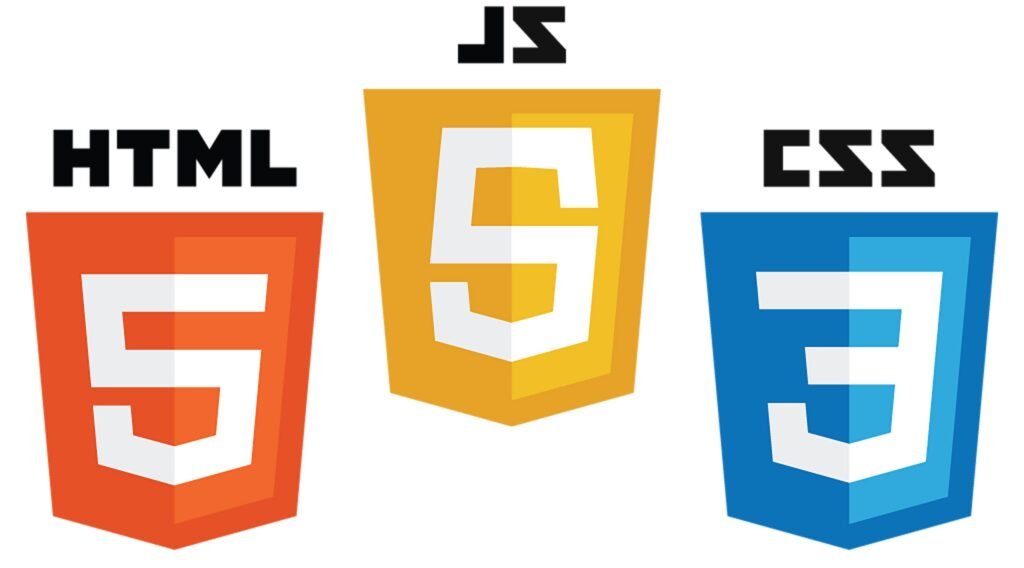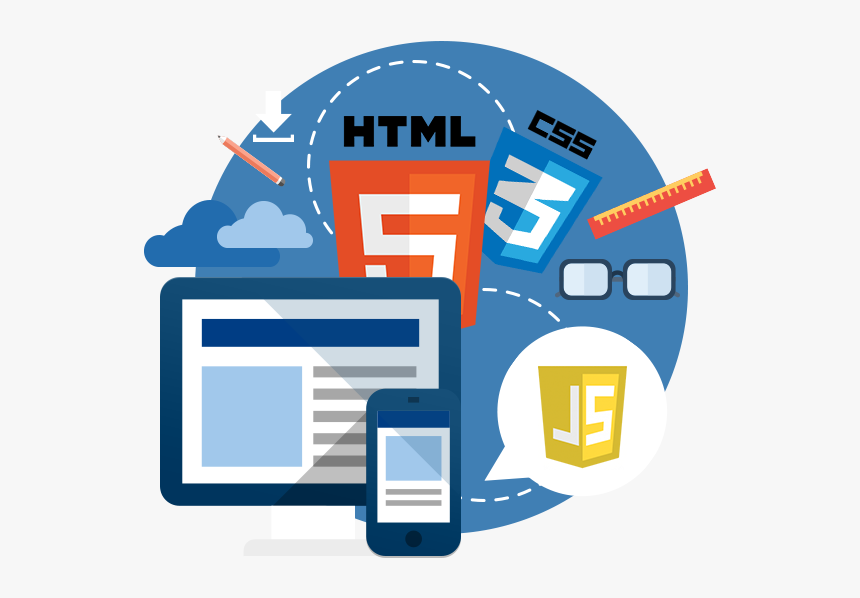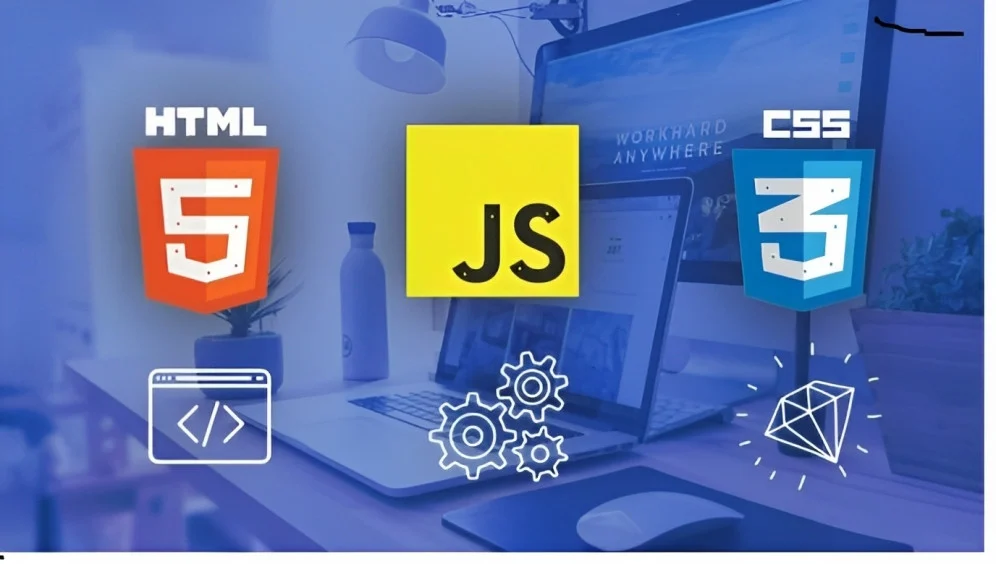Here’s a refined list of important interview questions focused on HTML, CSS, and JavaScript, categorized by topic for better clarity:
Table of Contents
ToggleHTML Questions
- What is the purpose of the `<!DOCTYPE>` declaration?
It specifies the HTML version being used and helps browsers render the page correctly.
- Explain the difference between block-level and inline elements?
Block-level elements (e.g., `<div>`, `<h1>`) take up the full width available and start on a new line, while inline elements (e.g., `<span>`, `<a>`) only take up as much width as necessary and do not start on a new line.
- What are the attributes of the `<form>` element?
Common attributes include `action` (URL to send data), `method` (GET or POST), and `enctype` (how form data is encoded).
- What is the purpose of the `<meta>` tag?
Provides metadata about the HTML document, such as character set, author, description, and viewport settings for responsive design.
- How can you create an accessible web page?
Use semantic HTML, provide `alt` attributes for images, ensure proper heading structure, and implement ARIA roles when necessary.
- What are semantic HTML elements?
Elements that clearly describe their meaning in a human- and machine-readable way, such as `<header>`, `<footer>`, `<article>`, and `<section>`.
- What is the difference between `<div>` and `<span>`?
`<div>` is a block-level element, while `<span>` is an inline element. Use `<div>` for larger sections of content and `<span>` for smaller parts.
- How do you create a form in HTML?
Use the `<form>` element along with input elements like `<input>`, `<textarea>`, and `<select>` to capture user input.
- What are data attributes in HTML?
Custom attributes that start with `data-`, allowing you to store extra information on standard HTML elements without conflicting with existing attributes.
- What are the differences between HTML4 and HTML5?
HTML5 introduced new semantic elements (like `<article>`, `<section>`, `<nav>`), native support for audio and video, and improved form controls, among other features.
- Explain the structure of an HTML document?
An HTML document typically includes a `<!DOCTYPE html>` declaration, followed by `<html>`, `<head>`, and `<body>` tags.
- How can you create a link in HTML?
Use the `<a>` tag, like so: `<a href=”https://example.com”>Link Text</a>`.

CSS Questions
- What is the CSS specificity hierarchy?
Specificity is calculated based on inline styles, IDs, classes, attributes, and element types, with inline styles having the highest priority.
- What are CSS preprocessors? Give examples?
Tools like SASS and LESS extend CSS with features like variables, nesting, and functions, making stylesheets more maintainable.
- How do you center a block element horizontally?
You can use `margin: auto;` along with a defined width, or use Flexbox with `justify-content: center;`.
- What are CSS transitions and animations?
Transitions allow property changes over a specified duration, while animations can define keyframes for more complex effects.
- Explain the concept of CSS specificity with an example?
If two selectors apply to the same element, the one with higher specificity wins (e.g., `#id` is more specific than `.class`).
- What is the CSS Box Model?
The box model describes the rectangular boxes generated for elements in the document tree and includes margins, borders, padding, and the actual content area.
- What is the difference between classes and IDs in CSS?
Classes are reusable and can be applied to multiple elements (using `.`), while IDs are unique to a single element (using `#`).
- What are CSS preprocessors?
Tools like SASS or LESS that extend CSS with features like variables, nesting, and functions, making it easier to maintain and write styles.
- What is Flexbox and when would you use it?
A layout model that allows for responsive designs by distributing space along a single axis. It’s great for aligning items and creating complex layouts easily.
- How do you implement a responsive design?
Use media queries to apply different styles based on screen size, and consider using flexible grid layouts or CSS frameworks like Bootstrap.
- What are the different ways to apply CSS to a web page?
CSS can be applied inline (within an HTML tag), internally (within a `<style>` tag in the `<head>`), or externally (linking to a separate `.css` file).
- What are media queries?
Media queries allow you to apply different styles to a page based on the device’s characteristics, such as screen size or resolution, enabling responsive design.

JavaScript Questions
- What is the difference between `==` and `===` in JavaScript?
`==` compares values for equality, performing type coercion if necessary, while `===` checks for both value and type equality.
- What are promises in JavaScript?
Promises represent the eventual completion (or failure) of an asynchronous operation and its resulting value, allowing for cleaner asynchronous code.
- What is the Document Object Model (DOM)?
The DOM is a programming interface that represents the structure of a document (HTML or XML) as a tree of objects, allowing scripts to interact with the content.
- Explain event delegation in JavaScript?
Event delegation is a technique where a single event listener is attached to a parent element instead of individual child elements, improving performance and memory usage.
- What is the purpose of the `fetch` API?
The `fetch` API is used to make network requests and handle responses in a more modern and flexible way compared to `XMLHttpRequest`.
6. What is the difference between `var`, `let`, and `const`?
`var` is function-scoped, `let` and `const` are block-scoped. `const` cannot be reassigned, while `let` can be.
- What is a closure?
A function that retains access to its lexical scope, even when the function is executed outside that scope. Useful for data encapsulation.
- What is the difference between synchronous and asynchronous programming?
Synchronous code runs in sequence, while asynchronous code allows for operations to occur independently of the main program flow, typically using callbacks, promises, or `async/await`.
- Explain the concept of “this” in JavaScript?
The value of `this` is determined by how a function is called. In a method, `this` refers to the object the method is called on. In a function, it may refer to the global object or be `undefined` in strict mode.
- Explain the concept of hoisting in JavaScript?
Hoisting is JavaScript’s default behavior of moving variable and function declarations to the top of their containing scope during compilation.
- What are the different data types in JavaScript?
JavaScript has several data types, including:
Primitive types: `string`, `number`, `boolean`, `null`, `undefined`, `symbol`, and `bigint`.
Reference types: `objects`, `arrays`, and functions.
- What are arrow functions, and how do they differ from regular functions?
Arrow functions provide a shorter syntax for writing function expressions and do not have their own `this` context. They are particularly useful in callbacks.

Behavioral Questions
- Tell me about a challenging web project you worked on?
Focus on the specific challenges you faced (technical or team-related), how you approached solving them, and what the outcomes were.
- How do you prioritize your tasks when working on multiple projects?
Discuss your approach to time management, tools you use (like task boards), and how you communicate priorities with your team.
- Describe a time when you received critical feedback on your work. How did you respond?
Highlight your ability to take constructive criticism positively, how you implemented feedback, and what you learned from the experience.
- Have you ever disagreed with a team member about a design or implementation decision? How did you handle it?
Share an example that shows your ability to engage in respectful dialogue, consider different perspectives, and ultimately reach a consensus or decision.
- How do you stay updated with the latest trends and technologies in web development?
Talk about your regular habits, such as following industry blogs, attending webinars, or participating in developer communities.
Scenario-Based Questions
- Imagine you’re working on a project with tight deadlines, and a critical bug is discovered just before launch. What would you do?
Discuss your approach to assessing the severity of the bug, prioritizing fixes, communicating with stakeholders, and deciding whether to delay the launch or push forward with a workaround.
- You are tasked with improving the performance of a slow-loading web page. What steps would you take?
Outline a systematic approach: analyzing the page’s load time, optimizing images, minifying CSS and JavaScript, reducing HTTP requests, and possibly implementing lazy loading.
- A client has provided you with a design that isn’t feasible with standard HTML/CSS. How would you address this?
Describe how you would communicate the limitations of the design, suggest alternative solutions, and ensure that client expectations are aligned with technical capabilities.
- How would you approach making a website accessible to users with disabilities?
Discuss practices like using semantic HTML, ARIA roles, ensuring keyboard navigation, and testing with screen readers to make the site inclusive.
- You notice that a part of your codebase is becoming increasingly difficult to maintain. What steps would you take?
Explain how you would assess the problematic code, refactor it for better readability and performance, and possibly implement documentation or unit tests for future maintainability.

Tips for Answering Behavioral/Scenario-Based Questions
Use the STAR Method: Structure your answers using the Situation, Task, Action, and Result format to clearly convey your experiences.
Be Honest: Share genuine experiences, even if they didn’t go perfectly. Focus on what you learned and how you grew from the situation.
Showcase Soft Skills: Highlight your communication, teamwork, and problem-solving skills, as these are crucial in collaborative environments.
Final Tips
Focus on clarity and confidence when answering.
Be ready to provide examples from your experience.
Brush up on coding challenges and live coding, as many interviews include practical tasks.
Prepare Code Samples: Be ready to write or debug code snippets during the interview.
Stay Updated: Technologies evolve quickly, so keep up with the latest features and best practices.
Practice Problem-Solving: You might be asked to solve coding challenges or demonstrate your thought process.
Good luck with your interview preparation.

